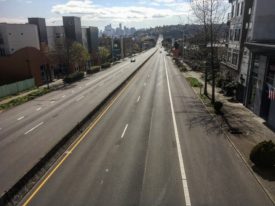 Because our economic progress is typically tracked through one-sided measurements such as the GDP, it’s easy to overlook the real economic picture for average Americans (as we have written about here,here, and here).
Because our economic progress is typically tracked through one-sided measurements such as the GDP, it’s easy to overlook the real economic picture for average Americans (as we have written about here,here, and here).
An example: Recently released census information, reported in the Seattle P-I, revealed that the income gap between the richest and poorest Americans has steadily increased over the last two decades, and the paychecks of those at the middle and bottom of the pay scale are buying less. The wealthiest 20 percent of Americans now account for 50 percent of all US income.
“The growing disparity is even more pronounced in this recovering economy. Wages are stagnant, and the middle class is shouldering a larger tax burden. Prices for health care, housing, tuition, gas and food have soared.”
The Cascadia Scorecard’s economy indicator told a related story: In the Northwest states, although total economic output has risen by more than 63 percent since 1990, per capita personal income has only grown by 23 percent. And the poverty rate has crept up from 9.7 percent to 11 percent.
Growing income inequality may also be a factor in life expectancy differences between countries—the US average lifespan ranks relatively low among industrialized countries—and even counties.







